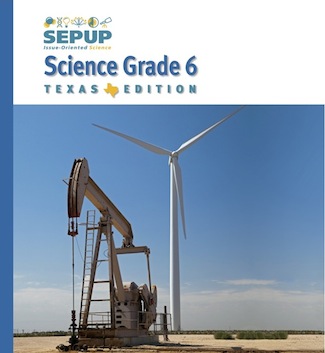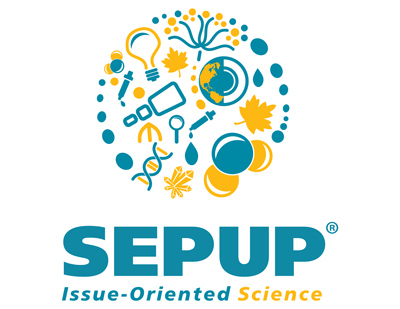SEPUP Science Grade 6 – Texas Edition

SEPUP Science Grade 6 is an issue-oriented year-long science course created to meet the Texas Essential Knowledge and Skills (TEKS) for the 6th grade. It is organized into six units.
SEPUP Science students conduct experiments, collect and analyze data, create models, and read and analyze information. There is a +400-page, hard-cover student book, a complete Teacher’s Guide, and a kit containing the laboratory equipment and supplies required to conduct course activities. The kit provides supplies for use with up to five classes of 32 students each.
Summary
- What are the trade-offs for renewable and nonrenewable energy sources?
- What is the future of space exploration?
- Where should we dispose of nuclear waste?
SEPUP Science Grade 6 is an issue-oriented year-long science course created to meet the Texas Essential Knowledge and Skills (TEKS) for the 6th grade. It is organized into six units.
Description of Units:
1. Chemistry
Students investigate the properties of substances, such as luster, conductivity, malleability, and density. They compare the properties of groups of elements, including metals, nonmetals, and metalloids, and differentiate between elements and compounds. They are introduced to laboratory safety and identify evidence for chemical change when substances interact. They apply what they have learned to evaluating the safety of chemical products.
Core Science Content: Elements, element distribution on Earth, compounds, formation of new substances during chemical reactions, physical properties, determining density of a substance
2. Energy
In the context of household energy usage, students investigate energy transfer and conservation. The activities explore key energy concepts, including the variety of types of energy, energy transfers within and between systems, the energy chains when energy is transformed from one type to a more desired type, renewable and nonrenewable energy sources, thermal energy transfer, and determining the efficiency of energy transfers.
Core Science Content: Thermal energy, potential and kinetic energy, energy transformations, energy management, energy efficiency, conduction, convection, and radiation, renewable and nonrenewable energy sources
3. Motion
Students explore how ramps and pulleys can reduce the force needed to lift an object. The effect of unbalanced forces on the motion of an object is investigated, along with measuring and calculating average speed and constructing motion graphs of moving objects.
Core Science Content: Gravitational potential energy, work, force, simple machines, unbalanced forces, average speed, motion graphs
4. The Earth
As students consider plans to store radioactive waste in various locations, they first investigate properties of rocks and minerals. The physical properties of individual specimens, such as luster, hardness, and color are investigated, as are main rock types – sedimentary, igneous, and metamorphic, as well as, how rocks change from one form to another in the rock cycle. Students also explore the structure of the earth – the core, mantle, crust, lithosphere, and asthenosphere – and learn how the slow movements of the tectonic plates of the earth’s surface help create earthquakes and volcanoes and shape surface features, including continents and oceans.
Core Science Content: minerals, rock formation, rock cycle, Earth’s structure, earthquakes, volcanoes, plate tectonics, mountain building, continental drift, observation, data collection
5. Exploring the Solar System
Students explore the celestial objects that make up the solar system, including the Sun, the planets, and asteroids. The position of the planets in the solar system is modeled and accurately scaled. They learn about the history and tools of space exploration and consider future missions.
Core Science Content: Planets, stars, moons, asteroids, dwarf planets, astronomical unit, comets, galaxies, meteors, Galilean moons, telescopes and astronomy, force, gravity, inertia, mass, space missions
6. Organisms and Environments
The issue of bioaccumulation directs students’ exploration of ecosystems and cells. Students observe how differences in cell structure guide the classification of organisms into domains. They investigate different levels of ecological organization using a computer simulation and by observing blackworms.
Core Science Content: Organism, population, community, ecosystem, abiotic/biotic, cell, nucleus, prokaryotic, eukaryotic, microscopy, classification, domain

